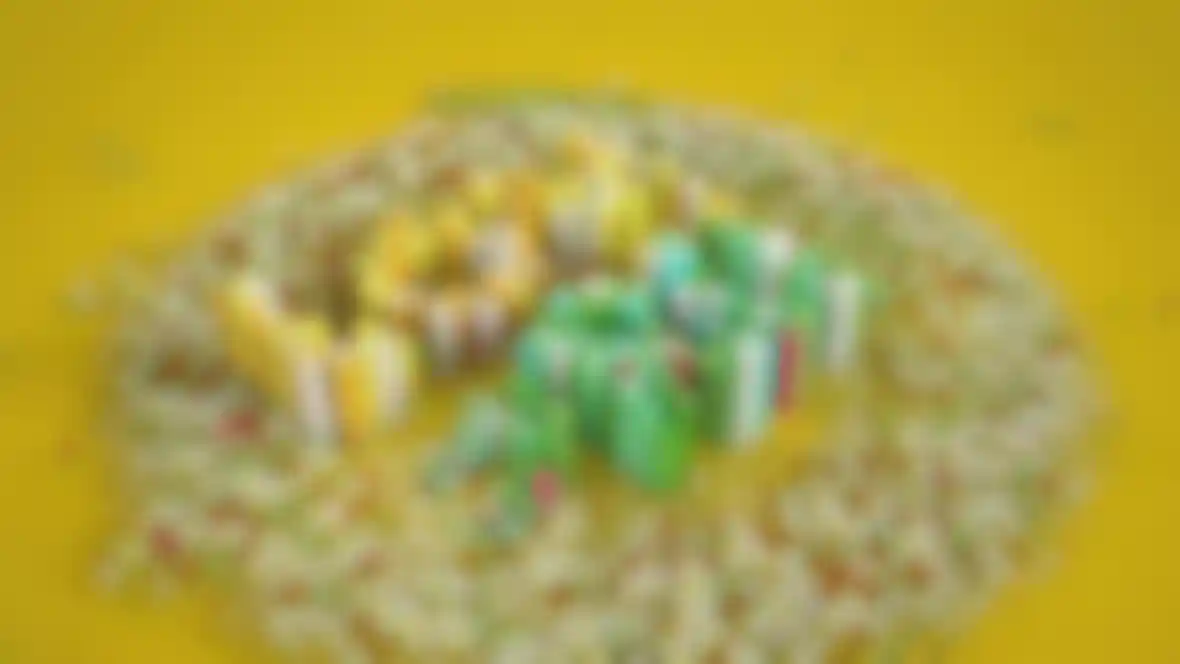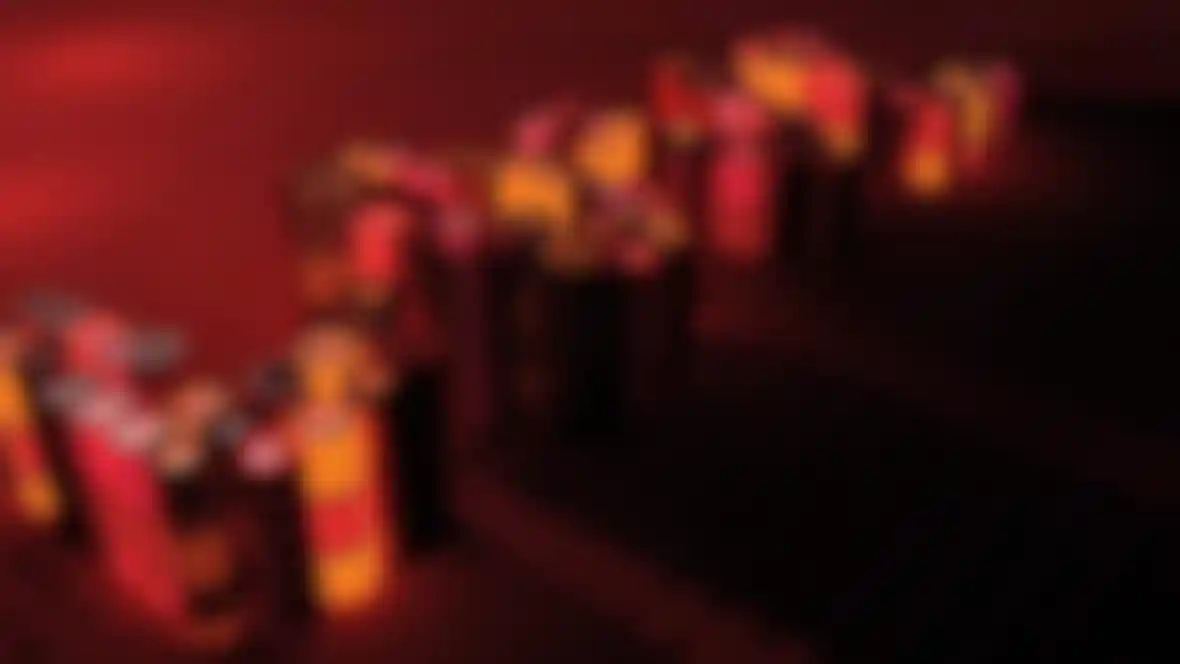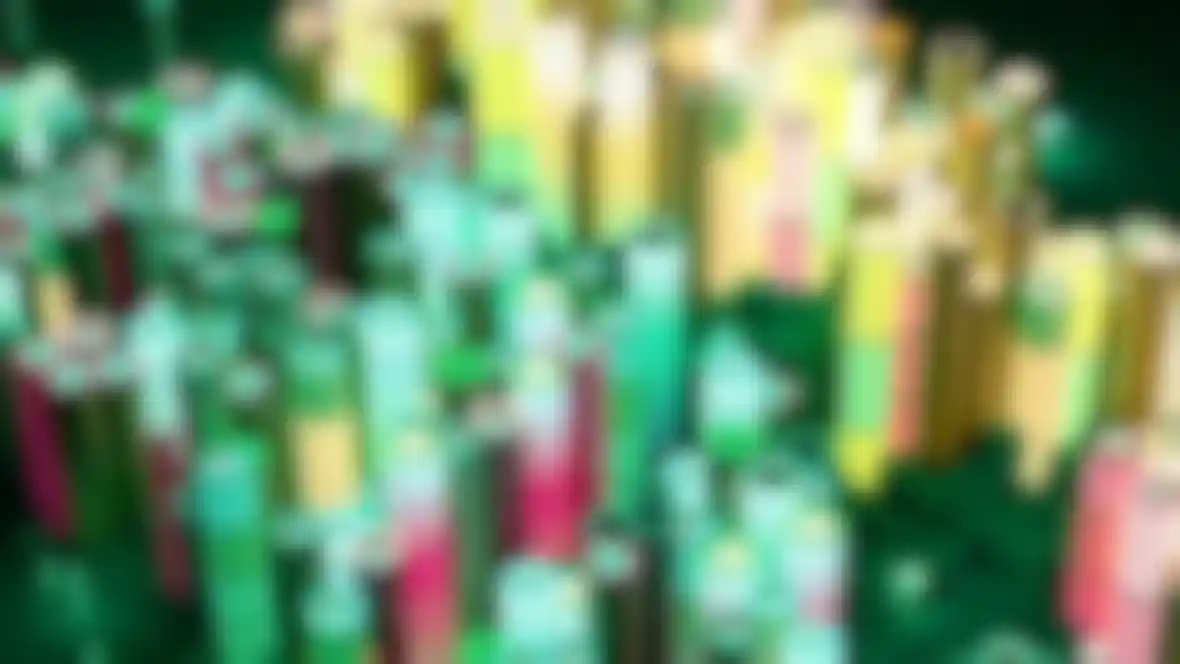
Love Is All Around For BBC One's 'Love 2013' series of channel idents, London design agency Vincent turned to Cinema 4D's extensive MoGraph toolset.
Britain's public service broadcaster, the BBC, has a rich history of channel idents spanning back to the 1950s. BBC One’s longstanding trademark was a globe of the world – initially created with mechanical models and mirrors and later using CG in the mid-1980s. After toying with hot air balloons and dancers in the 1990s and beyond, the circular motif reappeared in 2006, with a series of indents showing rings of kites, crop circles, a formation of swimming hippos, and so on. The series, entitled Circles, echoes the old BBC globe and the 'O' stood as a symbol of unity.

The company responsible for these idents is Red Bee Media, a media management company based in London with offices across Europe and in Australia. To celebrate the spring schedule, and continuing an on-going 'Love 2013' theme, it turned to Vincent, a design agency in central London, whose work includes video game cinematics, brand idents, TV show intros and even visual effects for ‘Prometheus’ and ‘Quantum of Solace’. "We direct, write, design, animate and produce all our projects in-house," says director John Hill. "We're very hands-on. We are experienced in many disciplines, including live action direction, VFX, branding, art direction, design, 2D/3D animation and script writing."
The team at Vincent decided to use the circular theme in a very literal sense, creating an animated pin cushion sequence of tubes arrayed and choreographed in sweeping circular patterns. The results are both photorealistic and abstract but their apparent simplicity belie the work required to complete the project in just four weeks. When initially questioned about the number of polygons, director John Hill's one-word response was "huge"; asked which tools or methods were employed, his answer: "patience."

The project was handled by a four-person team running Cinema 4D R14 on 12-core Mac workstations. As you'd expect, the MoGraph tools, specifically the Cloner in conjunction with various Effectors, were key in creating the sequence. "The pin cushion was created using the Cloner object," explains Hill, "with a series of effectors to control the height, width and colors. The Shader effector controlled most of the pin heights and color changes. Inheritance controlled a lot of the offset animations within selected groups of clones. And the Random effector was used to offset general timings and random heights of peripheral pins."
Hill highlights the Inheritance effector for its part in the project. "It was very useful to help offset timings within each group of animated clones," he says, "combined with the Shader effector to control heights and their color."
While the overall structure of the indents is relatively straightforward – using the cloner and effectors to automate the movement – the sheer volume of geometry meant that it was almost impossible to visualize the sequence in order to preview the timing. "The scene data was epic, and almost impossible to watch on-the-fly," explains Hill. "So we simply visualized/predicted in advance what the animation would look like in our minds."

To speed things up, the team used layers to group certain selections of pins, which they could then view and tweak independently. "We rendered out hardware previews for accurate timings and flow," adds Hill, "followed by cached low-resolution MoGraph renders for a more comprehensive preview." To get the specific look they wanted, the team then used XPresso to control those groups of clones that had specific hero animations.
However, not everything could be automated, such as the little flowers that blossom at precise times. "That was a bit difficult," admits Hill. "It's easy creating random timings for animations, but on-cue and ordered is quite difficult. We found ourselves doing this by hand, keyframing and using the Inheritance effector most of the time."
The animations were rendered out using Global Illumination on Vincent's in-house render farm, which consists of eight render clients. "Some sequences were rendered with the Physical and some with the Standard render engine," says Hill. "Standard is better for speed, but not as good for GI renders, so Physical was used for those sequences. Physical in R14 can be quite slow when you crank up the sampling settings to reduce the noise, so we needed a lot of rendering power to get these done in time. Because most of the sequences were quite evenly and broadly lit, we did have a few noise problems with the Physical Renderer that had to be smoothed out in post-production. Remove grain plugins always help with this in the composite."
All of the idents look great but the nighttime sequence with the subtly glowing pins is particularly effective. "We find using lights within objects is a good, speedy workaround to help create natural GI-style lighting," commented Hill. "Varying lights’ color and intensity also helps break up the overall lighting ambience very well."

With the sequences rendered, the team then turned to Adobe After Effects to add the final polish. To aid in the compositing, Hill remarks how the animations were output as a range of render passes: "We made use of the Ambient Occlusion, Diffuse, Shadow, Specular, Reflection and Depth passes amongst others to help grade and separate areas of color," he says. "The camera data helped to add 2.5D color fills and gradients over the 3D rendered content." The team rendered out various mattes and then composited gradient color ramps as 2.5D overlays. "These worked on top of the 3D render to help transition between waves of color," adds Hill, "but you can do this easily now with the CINEWARE plugin in Adobe After Effects CC."
Clearly this project pushed Vincent and Cinema 4D pretty hard, but Hill is full of praise for the app: "Again, Cinema 4D is by far the best 3D software for motion graphics and general creative flexibility," he says, calling it "stable, fast and intuitive." However it's possible that the new Cinema 4D R15 would have saved a lot of time on this project: "The faster rendering and live networking is fantastic," claims Hill. "The ability to make use of peripheral computers to help with processing on-the-fly is really great – it should really speed up our workflow."
Vincent London website:
www.vincentlondon.com